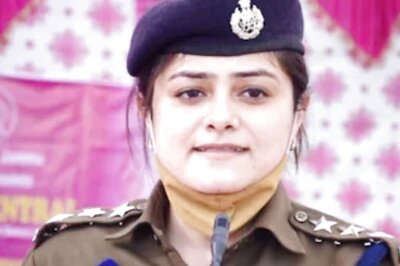
views
Insurgencies are armed movements against a constituted government and have a largely political goal. Therefore, combating insurgencies successfully depends to a very large extent on the political approach adopted to undermine the insurgent claims, and the use of force to create a secure environment in which the insurgents are unable to establish their writ. Both these elements of national strategy, politics and force, must be finely balanced in order to win a counterinsurgency campaign.
The utility of force and violence by the state to quell insurgencies is often hotly debated, but it should also not be underestimated. We have a clear example in our neighbourhood in Sri Lanka. In the concluding stages of the conflict, from 2006 to 2009, the Sri Lankan Army adopted a purely military approach to the destruction of the Tamil Tigers. There were no attempts at any political negotiations and all calls for a ceasefire were rejected. Thousands of civilians died in the final months of the civil war and the army still faces charges of human rights violations. However, there is also justification in the view that a violent end to the conflict was preferable to a further continuation of the extremely brutal 26-year-old war.
There are many other examples of the overwhelming use of force in insurgencies, like the Russian operations in Chechnya. A 2008 study by Jason Lyall, Does Indiscriminate Violence Incite Insurgent Attacks, found that indiscriminate violence by the Russians, in the form of random artillery strikes on Chechen villages, actually reduced insurgent violence.
Such tactics are not possible in a liberal democracy like India, where the excessive use of force against our own citizens is considered morally abhorrent. This is a reality and is reflected in the Indian Army’s doctrine in the principle of employing ‘minimum force’. However, even this minimum force must be applied with a clear understanding of what we wish to achieve in setting the stage for a political resolution of the conflict.
India has some of the longest-running insurgencies in the world, and while we have been able to keep them under control, a final resolution has remained elusive. In my view, one reason for this has been our inability to properly harmonise the use of force with politics. I will explore this by looking at the government’s approach to our oldest insurgency (Nagaland) and the most violent one (Jammu and Kashmir).
More than 20 years ago, the government entered into a ceasefire agreement with the National Socialist Council of Nagaland, Isak-Muivah group (NSCN-IM) as the first step towards a peaceful political resolution of the ongoing insurgency. The agreement permitted the NSCN-IM to retain their armed cadre and stay in designated camps that were out of bounds for security forces. This has resulted in a situation where the NSCN-IM continues to recruit, train and arm their cadre, and run a parallel government that openly carries out extortion and tax collection.
The ceasefire agreement has led to the strengthening of the NSCM-IN and a hardening of their demands. The “framework agreement for peace”, signed with much fanfare on August 3, 2015, remains shrouded in mystery. Edward N. Luttwak, in his thoughtful article, Give War a Chance, states, “An unpleasant truth often overlooked is that although war is a great evil, it does have a great virtue: it can resolve political conflicts and lead to peace. This can happen when all belligerents become exhausted or when one wins decisively. Either way the key is that the fighting must continue until a resolution is reached. War brings peace only after passing a culminating phase of violence.”
On the other hand, “a cease-fire tends to arrest war-induced exhaustion and lets belligerents reconstitute and rearm their forces. It intensifies and prolongs the struggle.”
Nagaland is a clear example of an insufficient use of force and premature political steps that have hindered a resolution of the insurgency.
The opposite is true of Jammu and Kashmir where all governments have given primacy to the use of force and measured success by security parameters. Even when the security situation was brought well under control, significant political steps were not initiated.
Local politics can be a great enabler in bringing calm to the streets of Kashmir. The central government is generally looked at with suspicion and, therefore, politicians at the grassroots level can play a positive role in the outreach to the people. Unfortunately, the reverse is also true. In multi-ethnic societies, local politicians can adopt hardened ‘ethnic’ positions that contribute to a worsening of the conflict. This has clearly played out in Jammu and Kashmir in the last few years.
There are many reasons for the deteriorating situation in Kashmir — Pakistan’s active support, increasing radicalisation, growing alienation, local recruitment in terror ranks etc. Among all this, local political disharmony between the BJP and the PDP also played a part as it prevented the crafting of a strategy that would address the aspirations of all three regions of the state. In the absence of a clear and unified political approach, terms like ‘muscular policy’ came into prominence.
The reliance on the security forces to find a solution to the Kashmir conflict should be balanced by giving due emphasis to the political process. David Galula, in his classic, Counterinsurgency Warfare, reminds us that, “In revolutionary warfare, strength must be assessed by the extent of support from the population as measured in terms of political organisation at the grassroots. The counter-insurgent reaches a position of strength when his power is embodied in a political organisation issuing from, and firmly supported by, the population.” It is, therefore, extremely important to strengthen local politicians, not weaken them by accusing them of being anti-national.
Politics and use of force are two key elements in the resolution of violent insurgencies. Based on our past experience, it is perhaps time to take a fresh look at how these two elements can be harmonised to create a successful strategy to deal with ongoing conflicts.
(The author is former Northern Commander, Indian Army, under whose leadership India carried out surgical strikes against Pakistan in 2016. Views are personal.)

















Comments
0 comment